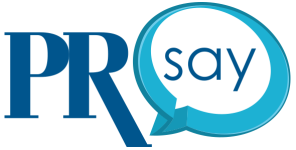On the next Strategies & Tactics Live on LinkedIn on Oct. 23, join Professor Lorra Brown for a session on preparing future communicators for an AI-driven workplace and building adaptable careers through personal branding and confident pivots. Sign up for the free session here.
As I continue my new chapter as a faculty member at the University of North Carolina’s Hussman School of Journalism and Media, I find myself reflecting on my first connection to the school.
My sister, a UNC English alum, built a distinguished career as a writer and editor at top-tier magazines. Our paths, mine in public relations and marketing, hers in editorial, sparked playful ribbing about the classic tensions between our fields. Yet as digital transformation reshaped the industry, the lines between editorial and branding blurred. With social media’s dominance and the rapid ascent of artificial intelligence, careers in journalism, media, advertising and public relations are rapidly changing.
After relocating from New York City to Maine, my sister pivoted into freelance work, copy editing and leading digital content strategy for major brands, while still reporting and writing features and cover stories for national outlets. Today, she is a senior editor at Wirecutter, the product-recommendation service of The New York Times. Wirecutter’s team of journalists conducts rigorous product testing and independent research to build trusted consumer guides.
According to The New York Times 2025 second-quarter earnings report, Wirecutter contributed more than $70.5 million in revenue, a strong indicator of how consumer-focused journalism has become a sustainable and growing career path.
Her journey has been on my mind since I joined Hussman, one of the nation’s top journalism and media schools, as an example of adaptability during times of disruption and legacy media decline. My role here is to help grow our undergraduate advertising, public relations and integrated marketing communications programs, as well as our online graduate programs, while also championing opportunities in journalism, writing, editing and digital media. Just as important, I aim to illustrate the value of a cross-disciplinary skill set and technological savvy.
That cross-discipline career focus feels more essential than ever. AI is not just transforming but disrupting industries, accelerating changes across journalism, advertising, marketing and public relations.
While headlines sometimes paint a gloomy picture of job prospects, the reality is that opportunities are expanding in new directions. Students who sharpen their reporting, writing, editing, tech skills, digital literacy and storytelling abilities position themselves for success in an evolving landscape.
Here are 10 growing or emerging career paths, each illustrated by the kinds of real job openings currently available across the industry.
- Content creator
Professionals who generate written, visual or multimedia content across platforms. Roles range from freelance writers producing blog posts to video producers creating TikToks, YouTube shorts, and even LinkedIn and Instagram reels. Major corporations and startup creator-led companies are hiring editors, strategists and content managers to support their storytelling business strategies.
- Service journalist
As outlined above, in my shout-out to my sister, service journalists focus on providing practical, helpful information, whether through advice columns, how-to guides or consumer product testing. Positions in this category are growing at outlets like Wirecutter, Consumer Reports and lifestyle publications that prioritize solving problems for readers and rank products based on a variety of criteria.
- Brand journalist/Content marketing specialist
This hybrid role blends journalism with strategic communications, using storytelling to advance a company’s brand identity. Corporations and agencies alike are hiring brand journalists and content marketing managers to oversee storytelling that feels less like advertising and more like editorial.
Just a few years back, a Sports Illustrated reporter friend turned brand journalist shared with me the ridicule of his hardcore sports news writer peers, (who lost their jobs when SI’s print subscriptions declined) when he switched roles. My friend still works in sports media and is unapologetically employed. He is using his reporting, writing and strategic storytelling skills to produce major brand partnership advertorials and multimedia content.
- Commerce journalist
Journalists who combine editorial skills with e-commerce. Publications and media brands such as GQ, People, Access Hollywood and BuzzFeed employ commerce editors, producers and affiliate writers to create product lists, co-ops, reviews and recommendation guides that generate revenue through consumer purchases.
- Content editor
The gatekeepers of quality and consistency. Content editors, copy editors and managing editors are still in demand across digital publications, nonprofits and brand publishing divisions, ensuring accuracy and editorial integrity in today’s crowded content marketplace.
- Social media strategist/Influencer relations
Social media continues to be an area of growth for those with transferable skill sets. Managers and strategists develop platform-specific campaigns, build communities and analyze performance data. In the creator economy, entire teams are now dedicated to social media strategy, community engagement and influencer partnerships.
- Digital storyteller
Multimedia journalists, documentary producers and interactive content creators use text, video, audio and graphics to tell engaging stories. Streaming services, advertising agencies, news organizations, corporations and nonprofit advocacy groups are expanding opportunities in this space, often with roles focused on immersive or interactive storytelling, employee engagement and advocacy communication.
- Data & analytics storyteller
The intersection of journalism, analytics and visualization. Data journalists and insights analysts transform raw numbers into compelling stories. Newsrooms, research firms, government entities, higher education and corporations are actively hiring professionals who can merge statistical expertise with clear, engaging communication. Understanding and embracing ways to use AI for data collection efficiency, while maintaining a human touch is rapidly changing the way organizations and scholars conduct research.
- Influencer Marketing & Partnerships Manager
What started with reality TV (“The Simple Life,” “Keeping Up With the Kardashians”) has evolved into a multi-billion influencer-led economy worth more than $33 billion this year, according to Sprout Social. Brands are partnering with content creators and influencers to reach target audiences. Athletes are being influencers to increase NIL deals and elevate their profiles.
Roles that oversee collaborations, activations, manage campaigns, negotiate deals, manage talent and develop strategies that merge authenticity with measurable ROI are abundant. The influencer economy will likely remain a legitimate career path for communications professionals for the foreseeable future.
- AI content strategist
Among the fastest-growing career areas, AI content roles are appearing across journalism, advertising and public relations. Titles such as AI content strategist or prompt engineer are emerging at agencies, startups and media companies. Professionals in these positions use generative AI tools to help with research, first drafts, campaign planning, audience profiling and social media scheduling, while also monitoring performance through SEO and engagement metrics.
Human oversight remains essential for editorial judgment, fact-checking, creativity and ethical standards. In journalism, AI can support background research and draft development. In public relations, it aids with stakeholder engagement, reputation management and crisis monitoring. In advertising and branding, it drives copywriting, persona development and creative ideation. Global holding companies such as Omnicom and IPG are leading enterprise adoption, making AI fluency an increasingly valuable skill across communication disciplines.
The takeaway
These examples highlight how dynamic the career landscape has become for journalism, public relations, advertising and strategic communication graduates. While the titles may look different from those of even a decade ago, the core skills remain familiar: strong writing, creative storytelling, critical and strategic thinking, and adaptability.
The industry will continue to evolve, but what will never change is the demand for talented multidisciplinary communicators who can build trust, convey meaning and inspire action. That is the message I emphasize to my students and colleagues, and it is what makes this moment such an exciting time to be in the field.
At Hussman and throughout my mentoring and career coaching network, my goal is to help students and seasoned professionals alike harness their talents, continue to learn, adapt to disruption and confidently navigate this evolving landscape toward successful, sustainable, productive careers.
Lorra Brown has more than 30 years of experience in public relations, marketing and higher education. A former senior agency executive with Ogilvy and Weber Shandwick, she teaches advertising and public relations at the University of North Carolina’s Hussman School of Journalism and Media, where she directs online Master of Arts in Digital Communication graduate certificates. She is a frequent contributor to PRSA’s Strategies & Tactics and PRSay.
Illustration: olga_demina







